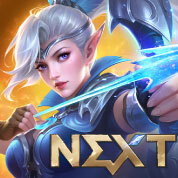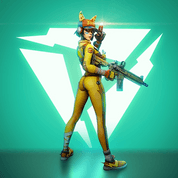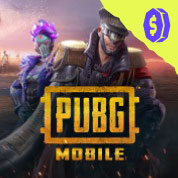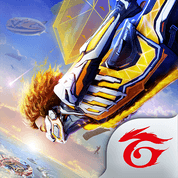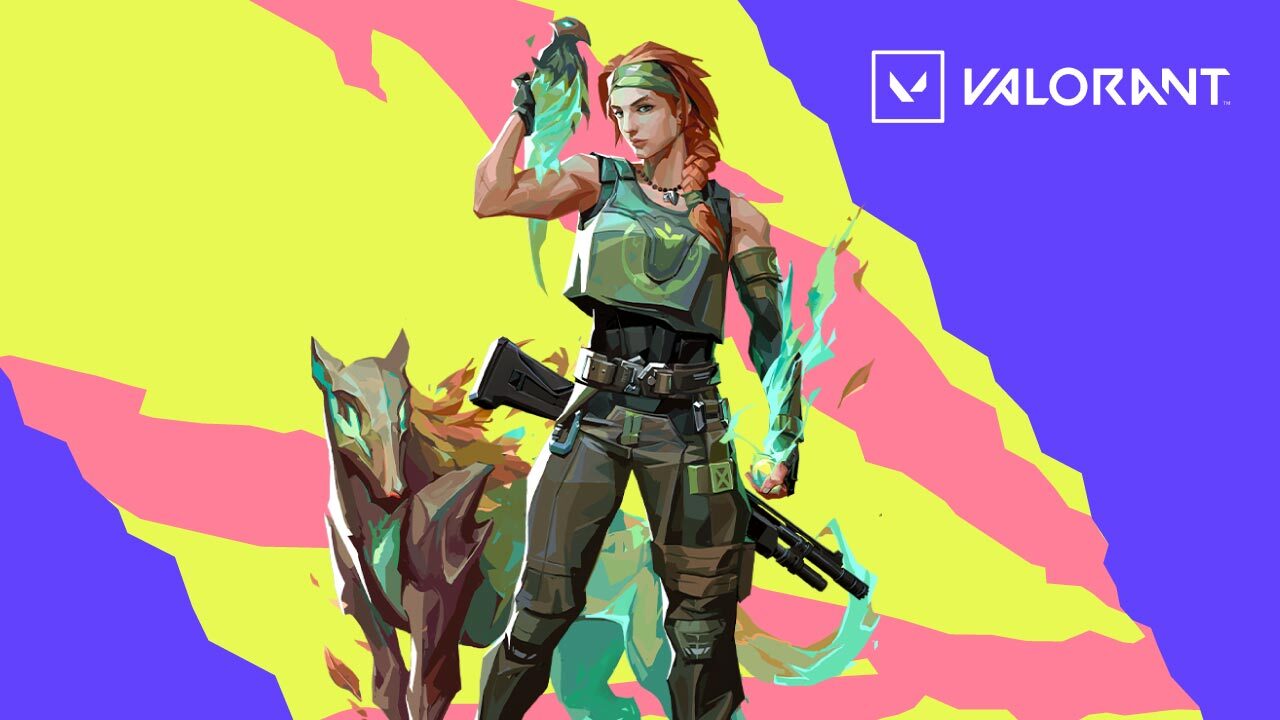
Heaven? Hookah? Cubby? These are terms in VALORANT that beginners are often confused with. I know I did. Except for the common terms in Tactical First Person Shooters (Tac-FPS) like “Eco,” “Half buy,” and “default,” VALORANT has a few more terms unique to the game. And in this article, we will list the common VALORANT terms used in-game. These include map callouts, in-game terms, and the aforementioned common terms in Tac-FPS that VALORANT also uses. Knowing these terms will not only give you an understanding of how the game works but also help to communicate with your teammates properly because, after all, VALORANT is a team game.
VALORANT Glossary of Terms
These are the majority of the terms used in VALORANT throughout its existence. The terms highlighted in bold in the description are related.
- Ace/Team Ace: When one player gets all five (or six, when a Sage performs her “Rez”) kills to the opposite team. Team Ace is when all players in one team get a kill each to the opposing team.
- Aggro/Aggressive: A play style that teams use to get in the bomb site quickly. Related to rush (“rush in(to) the site”). For single-player engagements, this term is used for those who want to take space quickly for the team. The Duelist role excels in playing aggro.
- Blinding/Flashing: A tactical callout to warn teammates that they or their enemies are using flashes. Flashes in VALORANT are longer compared to other Tac-FPS games so calling out to your teammates will help them adjust.
- Bonus: When the team carries over the weapons they bought the previous round while building up their economy.
- Buy: A buy round can go three ways, full-buy, force-buy, or half-buy (all related to economy). When a teammate asks if it’s the “buy” round, the in-game leader may answer in one of the three buys mentioned.
- Close: A positional callout where the enemy is positioned “close” to the frontline. This is common in tight spaces and immediate corners, such as the wall parallel to Split’s B Main, where a defending Sage may opt to wall it. Pre-firing this position is highly recommended.
- Controller: One of VALORANT’s Agent roles that provide smoke or walls that either deny the enemies’ line of sight or provide cover when the duels get tough.
- Counter strafing: A movement technique where strafing after shooting the first bullet can quickly eliminate unnecessary engagements. This also ensures that the first bullet after the strafe cooldown is accurate, which makes moving and shooting possible. This also has a chance to get kills. This technique can be done by pressing the A and then D (and vice versa) keys after shooting.
- CT: A term carried over from another popular Tac-FPS where the Terrorists (T) go up against the Counter-Terrorists (CT). In VALORANT, CT refers to the map callout where the Defender’s Spawn is. Conversely, T is the Attacker’s Spawn.
- Cubby: This is a map callout where one can safely hide. Cubbies are often three-sided spaces with a short length (about 5 – 10 meters end-to-end). When using the ropes, the immediate space below Split’s B Tower is an example of a cubby. Beware of shotgun players waiting in this area.
- Deafen: It is Fade’s unique debuff that literally deafens the enemy/enemies caught in her Seize or Nightfall.
- Decay: First introduced as Viper’s unique debuff, decay deals instant HP loss (up to 1 HP remaining) to enemies entering or passing through Viper’s Poison Cloud, Toxic Screen, or Viper’s Pit. The HP loss recovers a few seconds after exiting Viper’s aforementioned abilities. Implemented on Fade’s Seize and Nightfall.
- Default: A game plan that teams “default” to. It can be a site split (3-2 or 2-3 split is common) or a 5-stack site rush (mostly used by aggro teams). Playing default depends on how the team usually plays and is not actually set in stone. If you hear this in a solo queue, ask the in-game leader (IGL) what kind of default they want to play; unless you know who you are playing with.
- Defuse: Often called “def,” defusing the Spike is one of the objectives of the Defenders. It can be faked to bait out enemies trying to kill the defuser (fake defuse). In rare cases, it can be silently/stealthily defused after being planted (ninja defuse).
- Dink: A headshot with a “dink” sound cue notifying that the enemy has been hit in the head and, therefore, has low health. In some cases, the dink might be a kill when a stronger and more accurate gun is used.
- Double peek/double swing: When two players are set up for an immediate trade, they double swing. Not always a good strategy, but it sometimes catches enemies off-guard.
- Drop: A map callout with an elevated platform to drop from. Exclusive callout in Fracture but can be used in A Rafters in Icebox. Alternatively, when a player requests weapons from another who has bigger Credits.
- Duelists: One of VALORANT’s four Agent roles focused on getting early picks and space clearance for the team.
- Economy: A Tac-FPS term used to denote the available Credits/money of the team or each player. This also affects buy rounds. It can be used as an alternative term for a half-buy or as a strategic callout to save their Credits.
- Elo: Sometimes spelled “ELO” or “elo” is the range where players are slotted in ranked cue. Named after the physicist Arpad Elo, it is determined by numerical values with calculations based on how many points are gained or lost in a match, among other factors. For more information, please check this extensive guide on VALORANT’s matchmaking.
- Entry: A player who takes space for the team by entering the site and hopefully clearing the spaces within site by fragging. Gives out information when in-site.
- Execute: A strategy/plan for attacking or defending a site.
- Feeding: A generally reckless play by players who are either a) new to VALORANT and Tac-FPS in general, 2) players who just want to “troll” the game and not take it seriously, or c) insta-lock Duelists. Kidding aside, this is often an intentional play style that affects the team because they do not have any other option for entering the site or rotating to the other site. It can be a cause of frustration. If proven to feed, you can report the player.
- Flank: A callout for when the enemy team rotates to spawn or, in rare cases, where they are unexpected to get frags. Generally used to mean that the enemies are already surrounding the site and planning a retake. Applicable to lurking players as well.
- Flawless: When a team eliminates the enemy team without taking casualties.
- Flick: Flicking is a mechanical technique that involves the player’s mouse movement to literally flick to where the enemy is. This may often show up in highlight reels.
- Force-buy: When the team’s economy is in shambles, but a stronger weapon is needed to level the playing field somewhat, it is often wise to force-buy. Forcing to buy in a round has its compromises. For instance, an incomplete utility kit or buying half-shields to complete the utility kit. Force-buy often involves buying either the Phantom or Vandal rifles or the Operator sniper, as these weapons are the strongest and most consistent in the game. However, a force-buy scenario can happen after the pistol round where the team who lost the pistol round may opt to buy a submachine gun (Stinger or Spectre) and take a gamble.
- Frag: Often used to denote a “kill.” It can be used as an alternative to “pick.”
- Full-buy: If the team or player’s economy allows it, going for a full-buy will always be the most optimal strategy. Full-buy means you have the best weapons available, full shields, and all your utilities.
- Garage: A map callout for Split and Haven where the space connects the Attackers’ spawn to the bomb site. Officially called B Main (Split) and C Garage (Haven).
- Half-buy: When the team or player wants to save for the next round but does not want to settle for pistols or shotguns, they can opt to half-buy. This means Stinger, Spectre, Ares, and Marshal with half shields and an incomplete or complete utility kit.
- Heaven/Hell: The immediate tower or elevation change in certain maps is called Heaven while the one directly below it is called Hell. The cubby in Split’s B Site is directly below B Tower (Heaven), making the cubby also called Hell. In some maps, the Heaven/Hell callout might not be applicable or not generally used. For instance, A Rafters and A Belt in Icebox are called Rafters and Belt despite the elevation. This is because of the numerous high elevations in Icebox (Rafters, Belt, Pipes, Nest, Kitchen/Halls, Top Tube, Boiler) that calling them Heaven and its immediate low elevation Hell may confuse players.
- Heal: Sage and Skye’s abilities. May be called out to request heals.
- Hookah: One of VALORANT’s map callouts and unique to Bind, Hookah is the elevated space before B Site that is, literally, a Hookah bar. Officially called B Window.
- Initiator: An important Agent role in the game. Initiators provide a wealth of information for the team when their reconnaissance abilities successfully scan the targeted area.
- In-game leader (IGL): The one who calls the executes in the match. The IGL should have map awareness, a keen sense of tempo dictation, and the ability to consistently gather information in case the team needs to improvise their execution.
- Invulnerable: A debuff where the enemies take double damage when in contact with Viper’s Snake Bite, Killjoy’s Alarmbot, and Astra’s Gravity Well.
- Line of sight: Indicated by vision cones in the minimap, line of sight gives access to information to players by knowing where the enemies are and where they have placed their utilities. Controller Agents always use their smoke utilities to deny their enemies’ line of sight.
- Lineups: There are currently five Agents in VALORANT that can play for lineups: Viper, Sova, KAY/O, Killjoy, and Brimstone. Lineups are often played when the Spike has been planted and the lineup player positions themselves at some distance where they can effectively use their damaging utility and hear the Spike being defused. Doing a lineup requires knowledge of the map, the user interface (or the elements in the computer screen), and the trajectory and properties of the Agent’s utility for the lineup. For example, Viper’s Snake Bite has a different trajectory than KAY/O’s FRAG/MENT, and Snake Bite does invulnerable debuff and damage-per-second while FRAG/MENT does 3-part burst damage.
- Lobby/Lobbies: A place where players of the same skill level play together either in ranked or unranked games. VALORANT’s unranked lobbies are of mixed skill levels.
- Long: A map callout that has a really long sight line (roughly 30 – 40 meters and above). The sightline near B Teleport in Bind, Pearl’s B Ramp, Haven’s A Long, and C Long are considered “long.” Conversely, Short is a similar callout with a shorter sight line (at most 25 meters). Bind’s A Short is one example.
- Lurk: A dedicated player whose job is to gather information, gain map control, and possibly get frags against the rotating team. They usually play separate from the rest of the team. Omen, Cypher, and Viper excel in this playstyle.
- Molly: Shortened term for “Molotov,” an incendiary projectile that is thrown to prevent enemies from crossing to the other side and to clear spaces. In VALORANT, these utilities do damage-per-second (DPS) and do the same thing as an actual Molotov, like Viper’s Snake Bite, Phoenix’s Hot Hands, Brimstone’s Incendiary, KAY/O’s FRAG/MENT, and Killjoy’s Nanoswarms. These abilities are often called mollies. Even Brimstone says “molly” when he fires his Incendiary.
- Off-angle: When players hold an unexpected angle, like a few steps away from the closest wall or cubby, to catch the peeker(s) off-guard. Some Agent abilities like Sage’s wall or Jett’s Updraft + Dash are sources of off-angles.
- One tap: In a game that emphasizes “precise gunplay,” the one tap of the Vandal, Guardian, Sheriff, and Operator is sure to end up in highlight reels. One tap is a skill that involves a “one-tap, one-bullet” approach to getting frags. This can be consistently done by high-level players where their crosshair placement is, most of the time, on a head level. It can also mean that the enemies’ health is so low that it literally takes one tap of the left mouse button (or whatever the fire button is) to finish the job.
- One way: A strategically placed utility (usually a smoke) whose job is to provide a one-way perspective for the one who used the smoke. Usually, the defending team does one way to prevent attackers from entering the chokepoint. If done wrong, it could be advantageous for attackers. For one way to work, the defender should see the lower body (at least until the knees) of the enemy trying to peek. From the enemy’s perspective, they can not see the one holding the angle. And thus, the holder has a one-way perspective: “I see you, but you don’t see me.”
- Op: Derived from “Operator,” the strongest sniper rifle and most expensive gun in VALORANT. Inspired by the Arctic Warfare Police sniper rifle (AWP; pronounced as “Op”), the Operator is a one-shot, one-kill weapon that offers high risk and high reward. This is also a dedicated player role, regardless of their chosen Agent role, who is informally called the Op’er (or Oper).
- Pick: As an alternative term for “frag,” it means getting a kill. As a playstyle, it means getting enough information to get a kill and enter a site.
- Peek: A movement technique that involves strafing (sometimes, counter strafing) from a corner or wall to see if enemies are in their line of sight. Peeking also baits out the enemies by messing up their shot timing. So instead of peeking out fully exposed (dry-peeking), the peeker may choose to come back to the wall or corner they were hiding in to bait out the enemy’s shot. This technique is called (jiggle peeking). This is very useful to gather information if there is an Oper in the opposing team. Peek, as a term, is often misspelled as “peak.”
- Pistol round: The first round of the attacking and defending halves. This round is to build up the economy of the teams.
- Post-plant: A situation where the attacking team defends the Spike after being planted to win the round.
- Pre-fire: Pre-firing requires map knowledge, crosshair placement, and positions where enemies are most likely to be holding/peeking. Players are literally pre-firing those spots even if the enemy is not there.
- Ranked: Players who want to be one of the best in VALORANT may opt to play in ranked cue. As opposed to unranked, ranked games involve players playing against those within their skill range. Iron (the lowest rank) may play against up to Silver (two ranks ahead of Iron), for example.
- Resurrection/Rez: Sage’s ultimate ability. It can be called out by teammates to remind Sage players they have the ability available.
- Retake: When the attackers have planted the Spike, and the defenders have to retake the site. Usually, a retake happens when the defenders have given up the site to attackers.
- Rotate: When a site has been locked down by the defenders, the attackers may opt to rotate to the other site or claim spaces to rotate to. Defenders also rotate to the other site if things go quiet.
- Rush: When the team needs to get in the site quickly and do a 5-stack to claim the site. Often executing an aggro playstyle.
- Sentinel: The last Agent role in VALORANT where their specialty is to lock down sites and catch flankers.
- Shift walk: An important strategy in VALORANT is not to give as much information as possible. The most basic information denier in a match is to suppress the sound of footsteps by toggling/holding the Shift key to walk.
- Thrifty: When the team wins on a save round; typically when the economy of the team whose saving is at least 3000 Credits less than the enemy team. So a team who has at least 6000 Credits – enough for a Vandal or Phantom, full shields and abilities – goes up against a team who has Sheriffs, a Stinger, and a Bucky; half-shields, and incomplete utility kit, and the team with 6000 Credits lose.
- Trade: A situation where two or more peekers and holders trade off each other’s frags. Requires some attention to what is in front of the player.
- Ultimate/Ult: The strongest ability an Agent has. It is a “charged” ability and cannot be bought. Charging may be through 3 ways: getting frags, getting fragged, and obtaining ultimate orbs.
- Utility kit: The ability loadout of each Agent. Alternatively called “kit,” “abilities,” “util”
- Wallbang: VALORANT is known for its “paper-thin” walls and covers where there are spots where players can take a chance and have the bullets of some guns (Odin, Operator, Vandal, Sheriff, Phantom) pass through them. There is a probability that one can get a kill from this.
Don’t forget to top up your VALORANT Points at Codashop. We have a fast and convenient way to purchase VALORANT Points. Just provide your Riot ID, the amount of VALORANT Points you want to buy, and the method of payment you prefer. It’s simple, fast, and effortless.

